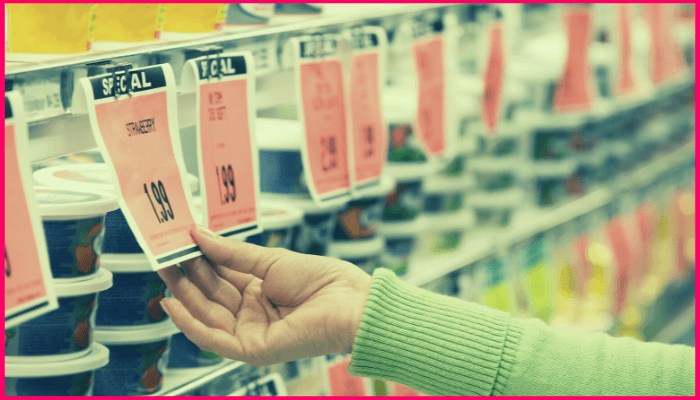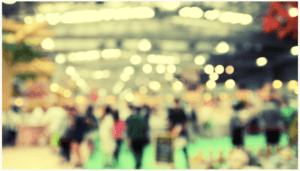Sweet Success: Overcoming Inventory Hurdles for Promotions
Reading Time: 11 Minutes
Traditions.
We don’t know how most traditions started, yet they’re our emotional identity.
Many of my traditions start during holidays. For the July 4th holiday, I started a tradition of setting off thousands of dollars of fireworks around Lake Shaokotan with brothers, sisters, nieces and nephews. AND then ended it. Why? Mosquitos are the state bird in Minnesota (joke). But if you’ve ever been around a lake at dawn in a rural area, you know what I’m talking about. I was tired of getting eaten alive trying to fire off fireworks, despite dressing like Kenny from South Park. As the kids get older, they can start it again, but I retired.
We have another tradition – one that I cherish.
Every Valentine’s Day, my family fries meat and cheeses on a raclette and then gouges on fruits dipped in chocolate fondue. This tradition, born out of a personal experience, has also become a case study for me in the retail industry, highlighting the challenges of inventory management during seasonal promotions.
Unlike Tevya from Fiddler on the Roof, I know how my tradition started. Fourteen years ago, I went on a cleanse for three months. No caffeine. No alcohol. No sugar. Pure, healthy eating. I felt good. However, people don’t tell you that when you go on one of these cleanses, you tend to snip at others when your scheduled mealtime is delayed. At least I did.
But when Valentine’s Day came around, all bets were off. A rambunctious, sugar-high event ensued, with one adult and two small children running around the house going crazy. Want a rush? Go without any stimulant, sugar, or sugar substitute for 90+ days, and then overload yourself and two children under 4 with excessive quantities. Enjoy the chaos.
After that day, my cleanse died, but a new tradition was born.
Discouragement
Over the last few years, more and more people have discovered the joy of chocolate-covered fruit during Valentine’s Day.
This surge in popularity, however, has its downsides. It’s becoming increasingly difficult to find good quality fruit at this time. And no, I’m not willing to overpay for it. I can’t buy fruit too far ahead because it spoils, but walking into the supermarket or local grocery store and finding pick-over fruit is a disappointment. It’s a frustrating and stressful experience that threatens to dampen the joy of our tradition.
Price, Promotion, and Inventory
Without intelligent solutions, it’s tough for grocers to stock the right amount of fresh fruit for these promotions; you have too little – disappoint customers. Too much, and it goes to waste. Only a few moments influence a customer about your brand. This is one of them. You need the right price, promotion, and offer while aligning inventory to the demand. Want to model how sensitive the quantity demanded of a good is to a change in its price? You need to account for inventory problems in the data. Want to forecast accurately? You need to know the inventory and sales were, and again, if there were problems in the data.
Detecting Stock Outs
If an item isn’t selling, is it because the price is too high, or is it because there is no inventory? That’s a crucial data point when determining an item’s price. And despite all the improvements in inventory management systems, they can still be wrong. Thus, when modeling, the system must know when an item wasn’t selling because of the price or because there wasn’t inventory. Furthermore, users should be notified when there are potential stockout problems because it keeps them from reaching their desired results.
Avoiding Stockouts and Overstocks
My situation focused on when enough inventory was available. But it’s just as bad if a retailer overstocks items for promotions, especially ones that spoil like fruit. While customers might be thrilled that they got their product, the retailer would be stuck with a lot of waste that destroyed all its profits. SKU/Day forecasting incorporating affinities and cannibalizations, which is when the sales of one product raise or reduce the sales of another, becomes crucial to getting the proper inventory amounts for the day.
Connecting Price to the Supply Chain
Planning without execution is dreaming. I’ve sat and heard some people deliver some of the most inspirational speeches in my life, but there was no substance, ability, or fortitude to get it done. The big idea may get the glory, but the execution gets the results. The same is true of setting prices and planning promotions.
Siloed decisions between promotional planning and supply chain teams create suboptimal results. For instance, if a promotional planner expects a particular lift, but a demand planner who controls the inventory expects something different, you can expect different outcomes. This could lead to overstocking or stockouts, both of which can be detrimental to the business. A better plan is to integrate the forecast from promotional planning into the replenishment system and ordering system to ensure the proper quantities and inventory levels are achieved.
As retailers navigate the intricate balance of pricing, promotions, and inventory management, the need for integration becomes paramount. It’s not just about avoiding the pitfalls of stockouts, overstocks, and poor price modeling. It’s about creating a seamless experience for your customers, ensuring they find the products they love, like fresh fruit for Valentine’s Day traditions, without the frustration of empty shelves or spoiled goods. By connecting pricing strategies with supply chain execution, you can create a harmonious symphony of operations that satisfies customer demand and maintains profitability. Ultimately, success hinges on planning meticulously and executing flawlessly to preserve the joy and excitement that shared food experiences bring to your customers.
The Latest Insights – Straight to Your Inbox
Sign up for the ClearDemand mailing list for actionable strategies, upcoming events, industry trends, and company news.














